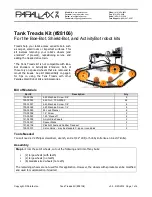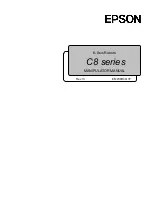
3 Installation
3.1 Safeguarding Installation
3-2
155556-1CD
HW0484963
VA1400
3.1
Safeguarding Installation
To insure safety, be sure to install safeguarding. It prevents unforeseen
accidents with personnel and damage to equipment. Refer to the quoted
clause for your information and guidance.
Responsibility for Safeguarding (ISO10218)
The user of a manipulator or robot system shall ensure that safeguards
are provided and used in accordance with Sections 6, 7, and 8 of this
standard. The means and degree of safeguarding, including any
redundancies, shall correspond directly to the type and level of hazard
presented by the robot system consistent with the robot application.
Safeguarding may include but not be limited to safeguarding devices,
barriers, interlock barriers, perimeter guarding, awareness barriers, and
awareness signals.
3.2
Mounting Procedures for Manipulator Base
The manipulator should be firmly mounted on a baseplate or foundation
strong enough to support the manipulator and withstand repulsion forces
during acceleration and deceleration.
Construct a solid foundation with the appropriate thickness to withstand
maximum repulsion forces of the manipulator referring to
"Maximum Repulsion Forces of the Manipulator at Emergency Stop"
and
Table 3-2 "Endurance Torque in Operation"
A baseplate flatness must be kept at 0.5 mm or less: insufficient flatness
of installation surface may deform the manipulator shape and affect its
functional abilities. Mount the manipulator base as instructed in
.
Table 3-1: Maximum Repulsion Forces of the Manipulator at Emergency
Stop
Maximum torque in horizontal rotation
(S-axis moving direction)
3800 N•m
(390 kgf•m)
Maximum torque in vertical rotation
(L-, U-axes moving direction)
3500 N•m
(357 kgf•m)
Table 3-2: Endurance Torque in Operation
Endurance torque in horizontal operation
(S-axis moving direction)
900 N•m
(93 kgf•m)
Endurance torque in vertical operation
(L-, U-axes moving direction)
1500 N•m
(158 kgf•m)
22 of 85
















































